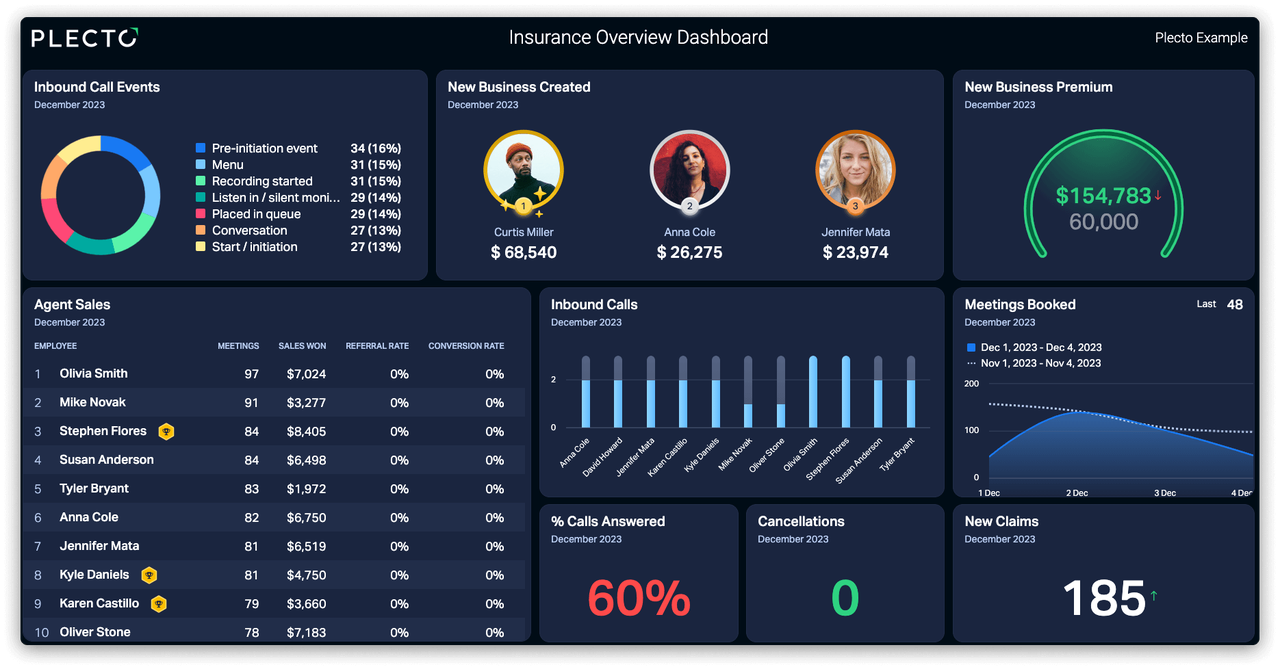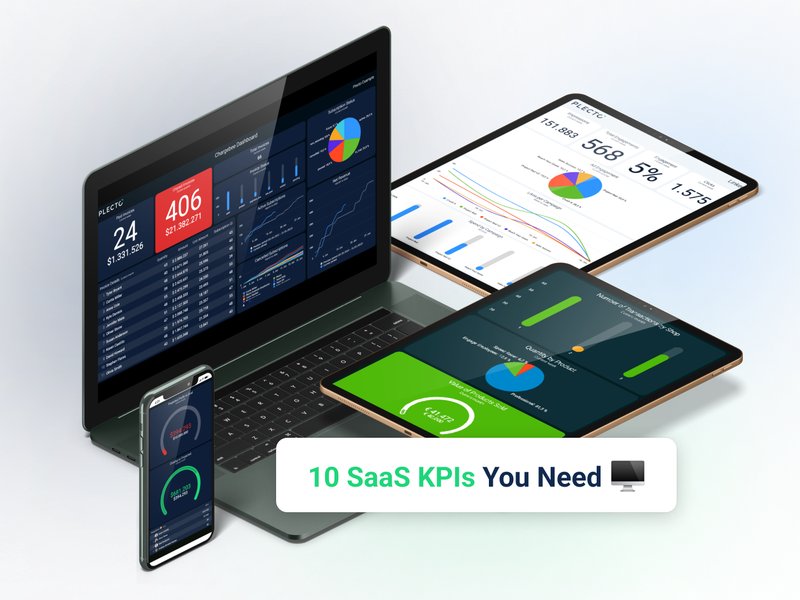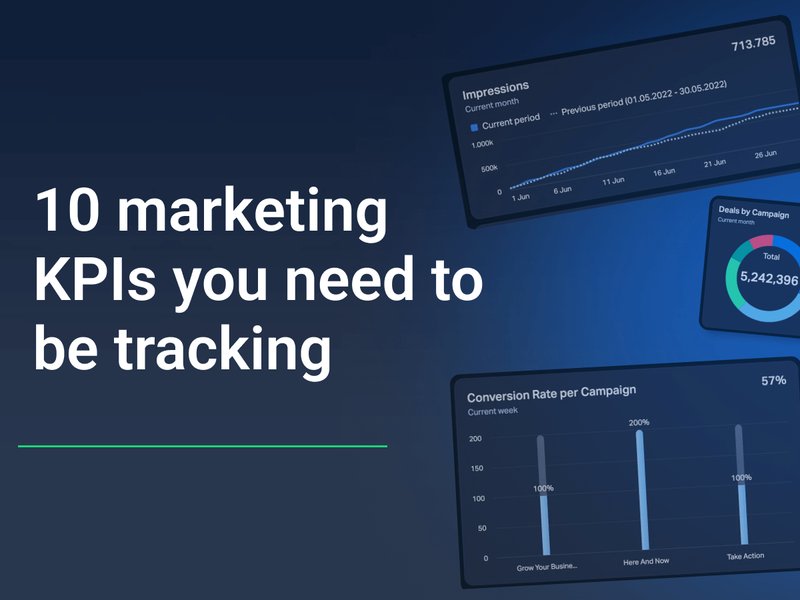As companies become more data-driven, more and more organizations are turning to key performance indicators (KPIs) to keep track of how individuals, departments, and the organization overall are performing.
Across industries, companies monitor hundreds (if not thousands) of different KPIs, but insurance is a unique and complicated business. So how do you know whether you’re tracking the right insurance KPIs? And what are KPIs in insurance anyway?
The following 15 insurance KPIs will answer the question, “what are KPIs in insurance?” And they’ll tell you exactly which insurance metrics you should be tracking to effectively monitor performance related to three of the most important insurance-specific business areas—sales, claims, and financials.
What are KPIs in Insurance?
The insurance industry is no stranger to data and analytics, which have driven claims-related business decisions for decades. However, like the old saying, “the cobbler’s children have no shoes,” the insurance industry lags behind other industries in using team KPIs to measure company-wide performance.
Let’s fix that. Here are 15 sales, claims, and financial KPIs that you can start tracking to become more data-driven today!
5 Sales Team KPIs You Should Be Tracking
Insurance sales is traditionally a high-touch business. Even with the recent proliferation of self-service quoting tools, agents still drive a large proportion of insurance sales. It doesn’t matter how innovative a company’s products are, they’re only profitable if people buy them.
Regardless of whether it’s inbound or outbound, here are five sales-related insurance KPIs you should be tracking.
1. Quota Rate
Sales targets should ensure a reasonable rate of growth while being attainable. That’s where the quota rate KPI comes in. This KPI measures how well your sales reps are performing against their quotas, which can help sales managers set the right targets. If everyone is hitting their quotas, the goals might not have been aggressive enough. Conversely, if everyone is missing their targets, the targets were probably too aggressive. While it’s good to challenge the sales team, setting targets too aggressively can be demotivating and lead to burnout. Use this KPI to drive decisions around quota setting.
This KPI can also help identify sales reps who could benefit from more training. If most reps are meeting their quotas while a handful of reps are constantly left in the dust, it might be time for some coaching.
2. Bind Rate
The bind rate KPI measures the percentage of quotes that turn into policies. It’s one of the best indicators of each rep’s ability to close deals.
3. New Policies Per Agent
While quotas tell a big part of the story, they aren’t the only indicator of successful selling. The new policies per agent KPI can highlight star agents who are selling an impressive number of policies but who might not be the department’s biggest revenue generators.
This KPI can give sales leaders a reason to celebrate success—and a reason to coach. If you're looking for ways to improve your sales team's performance, discover these 3 simple steps and how to implement them.

4. Number of Referrals
This KPI can give important insights into client satisfaction and organic growth by comparing the number of clients who were referred by existing customers to the total number of new clients over a specified period.
Happy clients can lead to word-of-mouth referrals, which can help grow your business over time with very little direct effort. If this number is lower than you’d like, then check out how to get more sales referrals from your current customers.
5. Underwriting Time
This KPI isn’t directly related to sales, but it’s in this section because it could affect your agents’ ability to close sales. The underwriting time KPI measures the number of days it takes the underwriting department to process an application and issue the policy. Underwriting should be completed within the timeframe stated in the company’s service level agreement—if there isn’t an SLA in place, now is the time to establish one.
If underwriting takes too long, the customer could sign with another company in the meantime—which means lost revenue and sunk costs for work done in vain.
5 Claims-Related Insurance KPIs You Should Be Tracking
Unfortunately, claims are a fact of life for insurers. While it’s impossible to run an insurance company with zero claims, maximizing profit is still an attainable goal—but not without tracking important claims-related KPIs.
Here are five claims-specific insurance KPIs that can unlock a treasure trove of insights into where one of the company’s greatest monetary and operational expenditures is going.
1. Claims Ratio
Possibly the most important metric on this list for gleaning insights into profitability, the claims ratio KPI measures the number of claims against revenue.
Use this formula to calculate the company’s claims ratio:
Number of Claims in a Specified Period ÷ Policy Revenue for the Same Period
This is an important benchmark because a higher-than-normal ratio could indicate fraud, whereas a lower ratio could indicate procedural issues that are making it difficult to file claims. It can also help determine whether premiums should be raised on certain products.
2. Average Payout Per Claim
Capgemini reports that insurers spend over $330 million (USD) managing and settling claims worldwide, which amounts to 70 – 75 percent of an average insurer’s combined ratio. That’s a significant expenditure!
Knowing the company’s average payout per claim can help predict future expenditures, which can help set policy rates that ensure a financially sound future. Remember to segment this KPI based on policy type for the most accurate overview.

3. Components of Claim Costs (CCC)
Payouts are only part of the picture. There are a lot of other costs involved in settling claims—for example, legal and administrative fees. Time to settle and report delays can also drive up settlement costs. Knowing what it costs to settle a claim can help highlight areas that can be streamlined to improve profits.
4. Average Time to Settle a Claim
This is an important indicator of whether customers will continue to do business with an insurance company. People often say, “you never know your insurance company until you file a claim.” While many customers initially choose insurance based on price (and hope they won’t need it), a low price won’t retain them if it takes forever to settle a claim.
5. Claims Processed Per Employee
This is an efficiency metric that can provide insights into operational procedures, and help drive faster settlement times to ensure client satisfaction.
Use this formula to calculate the average number of claims each employee is processing within a given timeframe:
Number of Claims Processed in a Specified Period ÷ Number of Adjusters
Use this information to identify employees who might be causing bottlenecks, and offer them the necessary coaching and training. Underperforming claims adjusters increase operational costs while long processing times can lead to dissatisfied customers who will ultimately churn and potentially damage the company’s reputation through bad word-of-mouth.
Build your first dashboard.
Start your 14-day free trial today
5 Finance-Related Insurance KPIs
Like all businesses, profitability is the end game for insurers. Unfortunately, information overkill often leads finance departments to suffer data fatigue and abandon ship—or track too much data that yields little value. This can drive intuition-based business decisions with dire consequences.
However, regularly tracking these five well-chosen finance KPIs can provide exactly the insights needed to ensure that you always know how the company is performing financially.
1. Sales Growth
Sales growth is the root of future profitability. This big-picture insurance KPI measures how much revenue has increased over a specified period. Breaking it down by new policies vs. renewals can give you even more insights into what the company is doing well and what could be improved.
Sister KPIs can be based on the number of new clients or policies for a specified period. Regardless of the insurance metric(s) you choose, you should track this KPI monthly at a minimum—but don’t forget to keep eye on how it’s tracking against your quarterly and annual goals.
2. Expense Ratio
This KPI compares total company-wide expenses to revenue over a specified period. Together with metrics like claim ratio and average payout per claim, expense ratio can help determine whether expenses should be cut or if premiums should be raised.
Use this formula to calculate the company’s expense ratio:
Total Expenses ÷ Total Revenue
Insurance is a complicated business, and it’s easy to lose sight of exactly what’s coming in and going out. Management should always know the company’s expense ratio, and act quickly if they notice an upward trend.
3. Average Policy Size
This is an excellent KPI for assessing risk—a handful of large policies exposes the company to more risk vs. many small policies. It can also give insights into sales and marketing performance and whether there’s room for improvement.
Use this formula to calculate the average policy size:
Total Premium Revenue ÷ Number of Policies Issued
4. Loss Ratio
The loss ratio KPI measures the total sum that’s been paid out in claims as a percentage of total premium revenue over a specified period. This is a fantastic barometer of whether the company is accurately assessing risk and charging the right premiums for its policies.
Use this formula to calculate the company’s loss ratio:
Total Claims Payout ÷ Total Premium Revenue
5. Net Profit Margin
Companies can track all the insurance KPIs under the sun but all that matters in the end is that the company is making money (and will continue to make money). But is it making enough money? The net profit margin KPI answers this question.
Use this formula to calculate the company’s net profit margin:
Net Income ÷ Total Revenue
If it’s above 10 percent, give yourself a pat on the back—this is widely considered an excellent margin in the insurance industry.
More Team KPIs
If we've piqued your interest in using data to fine-tune your company's performance, check out our 100 Key Performance Indicators where you will tons of relevant KPIs for sales, support, marketing, finance and more!
Data-Driven Performance Needs Great Tracking
Looking into these 15 insurance KPIs is a great first step. But to drive performance, you have to actively track your team KPIs—and act on them! Most data-driven companies visualize and share their KPI data on dashboards, and we recommend doing the same.
Plecto offers almost unlimited options for customizing your KPIs, data visualization, and performance agreements. Plecto also includes built-in performance-driving features like leaderboards, contests, and instant notifications that spark friendly competition and keep your employees motivated—whether they’re selling policies or settling claims.
Sign up for a free 14-day trial and see how these 15 insurance KPIs can help drive more informed business decisions.




